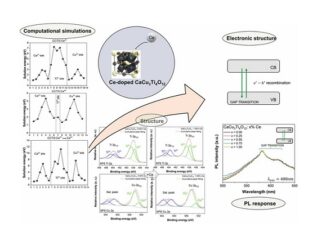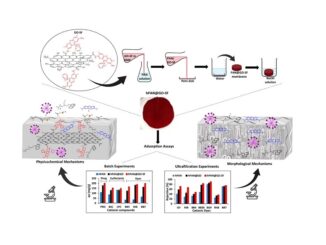
Abnormal resistive switching in electrodeposited Prussian White thin films
Abstract: Prussian White (PW) layers were deposited on Au/Cr/Si substrates by electrodeposition and characterized by different techniques. Scanning electron microscopy (SEM) images and Raman mapping reveal a uniform and homogeneous deposit while scanning transmission electron microscopy (STEM) images disclose the grain boundary pattern and the thickness of 300 nm of the PW layer. Resistive switching (RS) effect with an ON/OFF ratio of about 102 was observed. The RS mechanism was investigated from the log-log current-voltage plots. Ionic conduction was observed with an activation energy of 0.4 eV that could be associated with potassium ions as possible charge carriers at the grain boundaries. The endurance characteristics were investigated and a stable abnormal RS was observed for consecutive 500 cycles. Moreover, the retention was also evaluated and the high resistive state (HRS) and low resistive state (LRS) were stable up to 1000 s.
Author(s): Faita, F. L.; Avila, L. B.; Silva, J. P. B.; Boratto, M. H.; Cid, C. C. P.; Graeff, C. F. O.; Gomes, M. J. M.; Muller, C. K.; Pasa, A. A.
Journal of Alloys and Compounds
Published: 10 March 2022, Volume 896, 162971
DOI: https://doi.org/10.1016/j.jallcom.2021.162971
CDMF
The CDMF, hosted at the Federal University of São Carlos (UFSCar), is one of the Research, Innovation and Dissemination Centers (RIDC) supported by the São Paulo State Research Support Foundation (Fapesp), and also receives investment from the National Council Scientific and Technological Development (CNPq), from the National Institute of Science and Technology of Materials in Nanotechnology (INCTMN).




